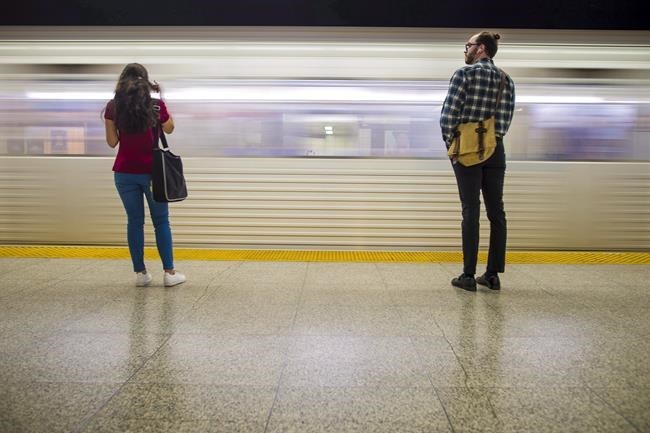TORONTO — Kelly Fairchild will be paying more to take public transit this year – money she says will come directly out of her food budget.
"Food and groceries are going up and if they keep increasing transit ... it's just not sustainable," says the Toronto resident, who receives a limited income from the Ontario Disability Support Program.
Last week, the Toronto Transit Commission announced a 10 cent fare hike – raising single cash fares to $3.35 – while also reducing services to address a $366 million budget shortfall.
It's another hit to consumers like Fairchild, who are already paying higher cost-of-living expenses due to inflation.
"Every time they raise the price of bread or they raise the price of the TTC or hydro, people are making sacrifices, people are going hungry and panhandling. I don't think they really understand people are living dollar to dollar," she says.
Public transit systems across Canada are grappling with revenue shortfalls due to the COVID-19 pandemic and, in many cases, reduced ridership has been slower to rebound than anticipated.
But experts say solutions such as hiking fares while reducing service – particularly as living costs rise – is a "Catch-22" that could alienate old and new riders, creating the potential for continuous financial problems and cuts.
Shauna Brail, an associate professor at the University of Toronto's Institute for Management and Innovation, says the TTC's fare increase and service cuts will hit the well-being and pockets of low-income riders dealing with inflation and the soaring costs of living hardest.
"It's not a bad thing necessarily to raise fares if that results in improvement, but the way the fares are being raised is not so much for improvement — it's not even to maintain the level we have. It's for survival," Brail says.
"If you couple the increased cost with the decreased service levels, it's certainly not going to help in terms of attracting ridership."
As of November, the TTC's ridership levels were just under 70 per cent of its pre-pandemic levels.
Cherise Burda, executive director of Toronto Metropolitan University's City Building research initiative, says experience and research indicate that more reliable and rapid service is what will increase ridership and turn public transit's "death spiral" into an "upward, virtuous spiral."
But better service and attracting new ridership may look different coming out of a pandemic. Burda notes that travel habits have changed significantly in recent years, such as workers returning to offices for only a portion of the workweek.
But she says ridership for non-work travel is back to around pre-pandemic levels, indicating people are using the TTC for other reasons like shopping, entertainment, sporting events or recreational activities.
Toronto's transit system is not the only one in Canada struggling with a deficit.
In November, the Montreal Transit Corp. estimated $77.7 million in losses in 2023 and warned they could lead to service cuts. As a result, the agency announced earlier this month it was scrapping a 10-minute maximum wait program for its busiest bus lines.
The organization says it expects ridership to be about 70 to 80 per cent of its pre-pandemic levels this year. No rate hikes are in the works, but last July fares were streamlined depending on where people live.
Calgary Transit, meanwhile, is estimating a $64 million revenue shortfall this year, though its ridership rebound has been higher than expected and as a result the city froze fares at 2022 levels.
One solution to transit systems' financial problems, Brail says, is seeking commitments from higher levels of government to provide stable funding that could allow agencies to rely less on fare revenue.
In Vancouver, transit fares increased by an average of 2.3 per cent last July under an agreement with the provincial government to limit price hikes.
Translink, which operates Metro Vancouver's public transportation system, agreed in 2020 to cap fare increases at that level until 2024 after securing federal funding to get them through a pandemic-related revenue crunch.
BC Transit, which handles public transport in the province outside Metro Vancouver, has also agreed to the same cap on fare increases.
But no matter who foots the bill for the shortfalls, Burda says cities and transit agencies should be focusing on how to build future ridership.
"Right now we're dealing with the rush to balance the budget and cities are required to do that, but I think there is an opportunity for analysis into ways we can attract new ridership from different travel patterns, and maybe from different segments of the population," she said.
"That all comes from increased services, so it is a chicken and an egg."
This report by The Canadian Press was first published Jan. 15, 2023.
———
This story was produced with the financial assistance of the Meta and Canadian Press News Fellowship.
Tyler Griffin, The Canadian Press



